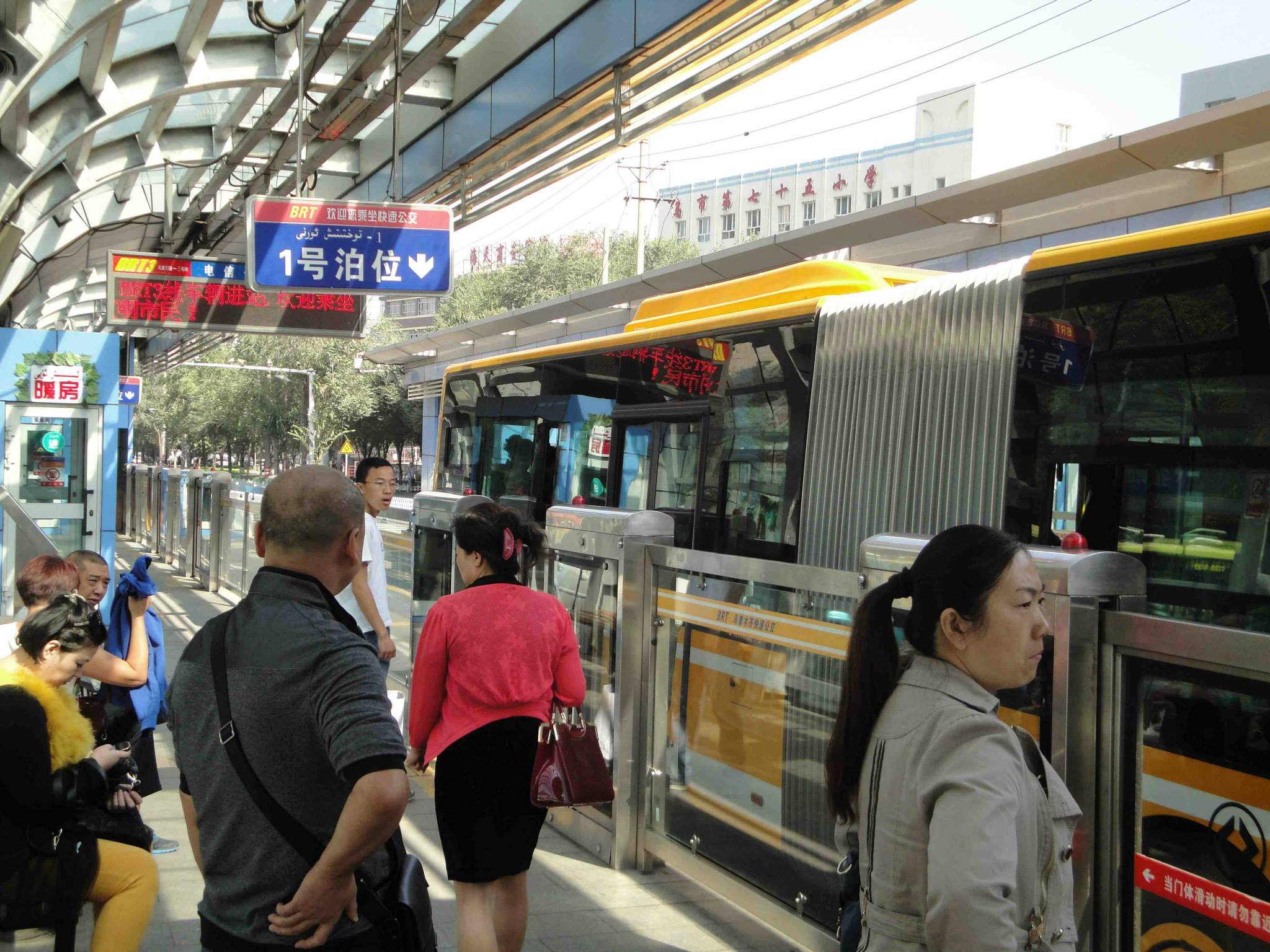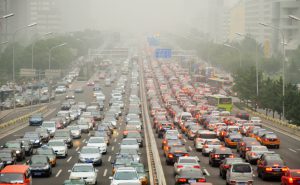Walter Hook is CEO of The Institute for Transportation and Development Policy (ITDP), an international NGO that aims to promote sustainable urban transport. He spoke to chinadialogue about how China’s fast-expanding cities can tackle their gridlock.
Nick Holdstock: What is the main cause of heavy traffic congestion in China?
Walter Hook: China is building at a fast rate, and these buildings are designed with car use in mind. They have a lot of parking space included, far more than in most European and US cities. The buildings are oriented in a way that assumes you’re going to drive in and drive out, which is astonishing, because practically nobody is. That’s the main reason car use is taking off, though it’s also being pushed by the auto industry.
The fact that people are buying a lot of cars is part of it, but people in Europe also own a lot of cars, they just don’t use them as much. The question is how pleasant are the alternatives. In China most people still use the bus – there’s a lot of subways being put in but they’re not that nice.
NH: What are the aims of the ITDP’s new Transit-Orientated Development (TOD) standard?
WH: The aim is to give a blueprint for cities and real estate developers to follow that encapsulates best practice in terms of human-orientated design. It’s based on behavioural psychology about creating great public space – liveable, walkable neighbourhoods. What we found is that the elements recognised in the standard correlate with lower car use. You can own a car, but you don’t use it as much.
The hope is that the standard will become a recognition scheme. If a developer and a city work together to create a great neighbourhood we would give them an award, and that would publicise best practice.
NH: Were there particular locations that inspired the standard?
WH: We looked at 60 urban redevelopment projects around the world – 80% of the really good ones were in Europe. The Central St Giles development in London was the highest scoring, with all the elements we look for: almost no parking, a permeable block you could walk through, mixed use- commercial, residential, retail all in one, very bikeable and right on top of transit links.
We also have some projects in China that opened up the superblock- if there are pedestrian pathways and bikeways that are open to non-residents, superblocks are fine. The problem is that they tend to be gated for security reasons. So we recognised a project in Hong Kong where the security guards sit in the ground floors of the towers, rather than at a gate, so most of the space is actually open and people can walk through. The porousness of this development turns out to be important for people trying to get to the ferry terminal.
It’s a solvable problem in public space- instead of putting one gate in, there could be a public passage every 100 metres. There are some examples of this, like the Jianwai SOHO project in Beijing, which has open public blocks, and it’s great, very lively.
NH: How much opportunity will there be for these kinds of ideas to play a role in the planning of China’s new cities?
WH: There was a big effort by one of our partners to intervene in the Kunming new town project. We’ve also worked with Changsha and Harbin on new towns on the edge of the city. There are some opportunities to get things right. In Harbin we convinced them to leave space in the middle of the street grid for a Bus Rapid Transit (BRT) System [a so-called super fast bus system that uses a dedicated traffic corridor], and also there were bike lanes from the very beginning. Of course there were no people there, so we haven’t implemented the BRT yet – there’s no real need for it.
As a general rule, we prefer the city authorities to use the existing urban fabric, to create new sub-centres connected to the existing city. Our impression is that most people in China don’t want to live in these new towns, which are pretty dead. So we’re working with city authorities to change the zoning around BRT stations and cap the parking allowance at each one. The aim is for the city to grow at these nodes, for the population to become denser, rather than for the city to sprawl.
But obviously urbanisation in China is driven by many factors beyond the power of an NGO. We just hope to get some models that city authorities think are successful and then embrace them. For instance, the Guangzhou BRT system had visitors from 80 other cities, and Lanzhou, Urumqi, and Yichang have put their own BRT in as well.
Whether these great practices will fundamentally change the development pattern in China, I don’t know.
NH: What are the obstacles to reducing car use in China?
WH: They need to massively roll out BRT. They are building metros faster than anyone else in the world but it’s not keeping pace with the urbanisation rate. They need BRT on all their major urban arterials. Parking should be capped at the level which the surrounding streets can absorb without saturating. Right now they are building like crazy- the only reasons the streets haven’t saturated is because the motorisation hasn’t caught up.
They also need their buildings to be transit-orientated, not car-orientated. City growth also needs to happen in the areas of the city already served by mass transit, or in places where that will happen soon, rather than allowing development where anyone feels like building an office tower.
NH: Who pays for these bus systems?
WH: They are usually profit making, from an operations perspective. None of the metros in the world cover their operating costs, except for Hong Kong. The cost of the bus fleet is covered out of the fare revenue. The infrastructure is usually financeable by municipal funds alone. In contrast, metros are usually funded by real estate deals. The cost is magnitudes greater than the BRT projects, and they take longer to build. The BRT can be retrofitted into the city centre much easier. The metros they are building out to the periphery in many cities are also leaving large amounts of the cities under-served by mass transit. The BRT will also be the secret to fixing transport needs within the built up areas – it’s the best hope for China’s cities.
For more on China’s urbanisation, read our special report: Reimagining China’s cities








